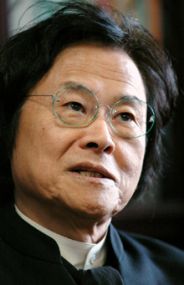Kisho Kurokawa (Kisho Kurokawa)

Architect. Born in Nagoya, Japan, he initially studied architecture at Kyoto University and went on to earn a master’s degree in 1959 from the University of Tokyo, and a PhD in 1964. He was a co-founder of the Metabolist Movement, a school advocating organic, renewable architecture that could evolve through the addition of clip-on modular units as a response to concerns about overcrowding. The most notable work was the pavilions designed for the 1970 Osaka Expo, where his five-storey “Takara Beautilion” won significant praise. He advocated a “symbiotic” style that reinterpreted local traditions and blended them with international techniques in a manner suitable for modern life. His designs are found in Japan as well as internationally. His most celebrated commission abroad was the new Kuala Lumpur international airport where his light and spacious conceptwon him the Italian Dedalo-Minosse International Prize for 2003 to 2004, and in 2003 the airport was awarded a Green Globe 21 Certificate for its ecofriendly design and harmony with its natural surroundings. He also received the Japan Art Academy Award (the most prestigious award for artists and architects in Japan) in 1992, and a Gold Medal from the French Academy of Architecture in 1986. In Great Britain he was awarded the Walpole Medal of Excellence in 2005, and was appointed an Honorary Fellow of the Royal Institute of British Architects, the first Japanese to be so honoured. A prolific writer, he published his 100th literary work, Revolution of the City, in 2006. Died of heart failure in Tokyo. (bio by: Fred Beisser)
Born
- April, 08, 1934
Died
- October, 10, 2007
Cemetery
- Aoyama Cemetery
- Japan

